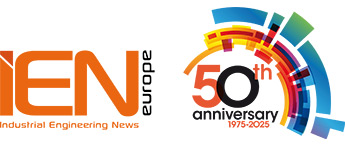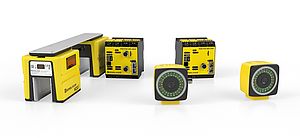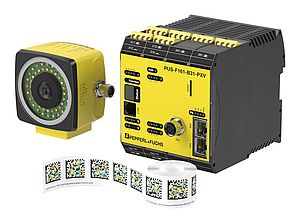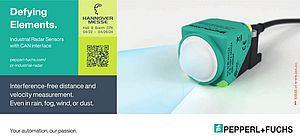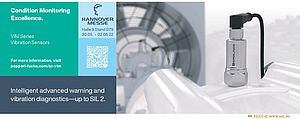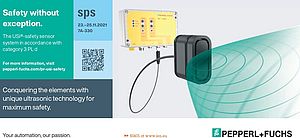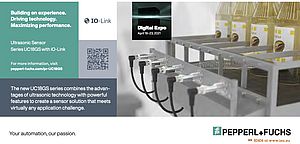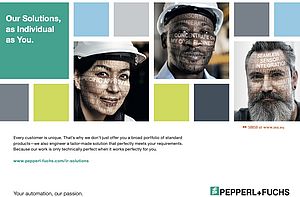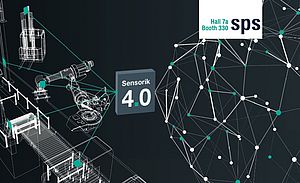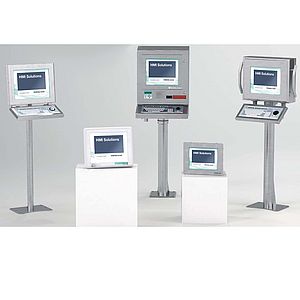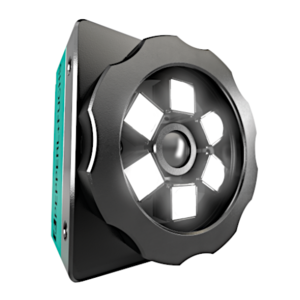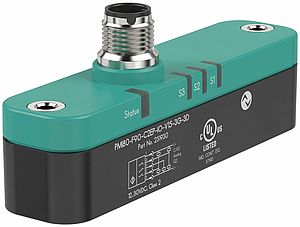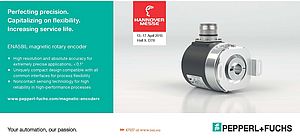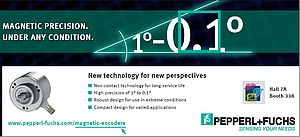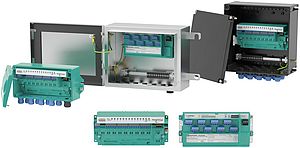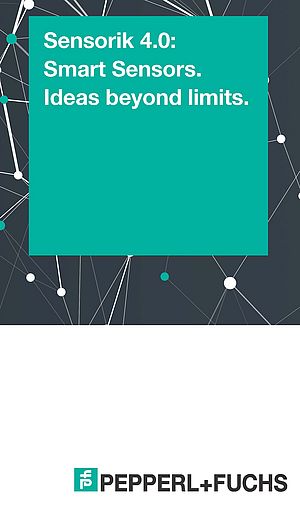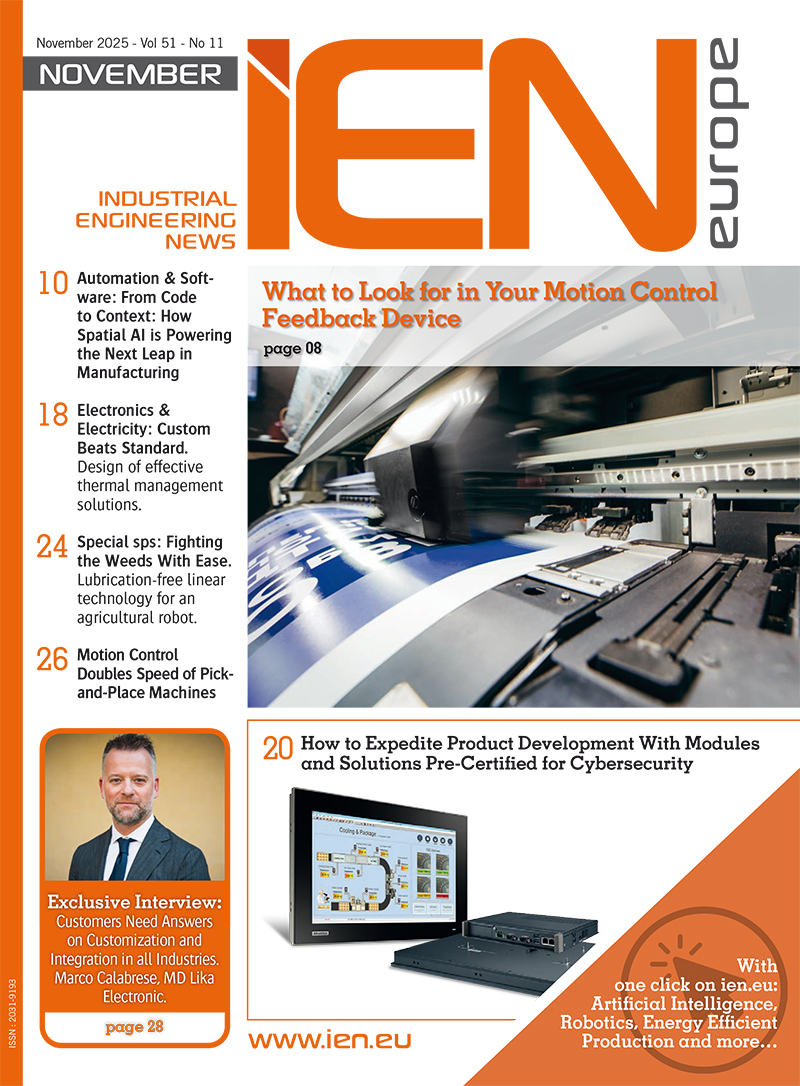In comparison to other physical measurement concepts, ultrasound has a number of principle advantages. The core of an ultrasonic sensor is the ultrasonic transducer, which generates short acoustic pulses and detects the echo of these signals using piezoceramics and a membrane. The integrated electronics calculate a distance value using the time difference between the transmission pulse and the echo. The material, color, and surface structure of the target object have practically no influence on this process.
This is also the case for vapor, precipitation, dust, and deposits. The sensor is insensitive to nearly all forms of contamination. The sound waves emitted by the sensor spread out in a cone shape; they therefore hit the sensing range over a wide area rather than at specific points. This means the target can be detected even in the case of uneven surfaces, recesses, and broken contours. The device measures without contact and does not cause wear, and detects nearly any object or mass with a high level of reliability.
Proven Technology Elevated to a New Level
The UB*-F42 ultrasonic sensor from Pepperl+Fuchs combines reliable signals and a rugged device design. Its technical foundation has been proven repeatedly over many years in its predecessor of the same name and the conceptually identical K0 series. However, the new edition features significant improvements. While the old devices have plastic plugs, the new model has metal ones for improved mechanical stability. The design also goes a step further in terms of the degree of protection: With its IP67 rating, the housing is exceptionally tight against dust and humidity. The dimensions and installation devices remain identical to those of its predecessor; adapter plates are available for use in replacing K0 devices. In addition, users can choose from a wide range of different output versions.
The most significant innovation relates to communication capability: The integrated IOLink interface of the new device not only simplifies commissioning and parameterization, but also grants access to all sensor parameters, as well as comprehensive diagnostics data and process data. Alongside measured values, the device also makes various other parameters available via IO-Link, including operating hours, temperature, and device status. The differentiated data logging and communication creates the basis for integrating the device into the Industrial Internet of Things (IIoT) and Industry 4.0 environments.
Simple Commissioning, Flexible Installation
For the new version of the device, users no longer have to manually use push buttons for the teach-in process—this now happens directly on the device via a teach-in input. This allows the sensor to be parameterized and operated without using IO-Link. In comparison to similar devices on the market, the UB*F42 series also offers the IO-Link interface in combination with two push-pull outputs. This means the values for two switching outputs are available to the control system; for example, if the device is used for fill level applications, these would be "empty" and "full." One single sensor can therefore complete two tasks, which reduces the cabling and integration work required.
The UB*-F42 series includes devices with various measuring ranges: 500 mm, 2000 mm, 4000 mm, and 6000 mm. The 500 mm and 2000 mm versions are also available in "sidelooker" versions. In the sidelooker version, the converter is rotated 90° in the housing so that the acoustic membrane is located in the narrow side, making the device easier to mount in very confined spaces. All of the devices in the series are also distinguished by their very short dead band compared to competitor products. This minimizes the space requirements for measuring applications.
The shape of the sonic lobe, i.e., the breadth of the surface included in the sensing range, can be infinitely adjusted to suit the application. A sonic lobe with a large diameter ensures that large surfaces can be scanned and that objects can be detected reliably when they pass through the area at different points. Using a narrow sonic lobe can prevent interference from echo effects; for example, when used in a small, enclosed space like a silo. When using several sensors in close proximity to each other, automatic synchronization ensures that there is no signal interference once the synchronization inputs are connected. Up to 10 devices can be operated in close proximity in this way.
Typical applications for the robust sensors can be found in a wide variety of areas, as the following examples show.
Fill Levels in Tanks, Silos, and Construction Material Storage
Ultrasonic detection is as effective for solid material as it is for liquids. Rising vapors have no influence on the measurement—the liquid level is always reliably detected within the sensing range. This also applies for bulk material that may may naturally settle into a cone shape within a container. The signal from the surface sensing range can be used to form a valid average. When used in open storage areas, continuous and reliable function is ensured due to the high degree of protection of the housing even under especially harsh conditions and the fact that the measuring principle is insensitive to weather conditions. The signaling is impervious to even thick dust buildup, which often forms in construction material silos.
Entry and Exit Monitoring
When mounted at a gate, a UB*-F42 sensor can detect the presence of vehicles. The device can be used as a reliable gate monitoring system when parameterized accordingly. Neither the contours of the vehicle, nor its color or surface sheen can impact the detection process; harsh ambient conditions are tolerated with no issue.
Intralogistics, Production, Material Handling
The ultrasonic sensor measures the distance to a roll of material (e.g., paper, foil, sheet metal) that is used to feed said material into a production process. Consumption is calculated based on the reducing diameter of the roll. UB*-F42 series devices can also take over other control and measuring tasks. Since these ultrasonic sensors can be used flexibly, a wide range of different tasks can be undertaken using just one type of device, significantly streamlining storage solutions.
